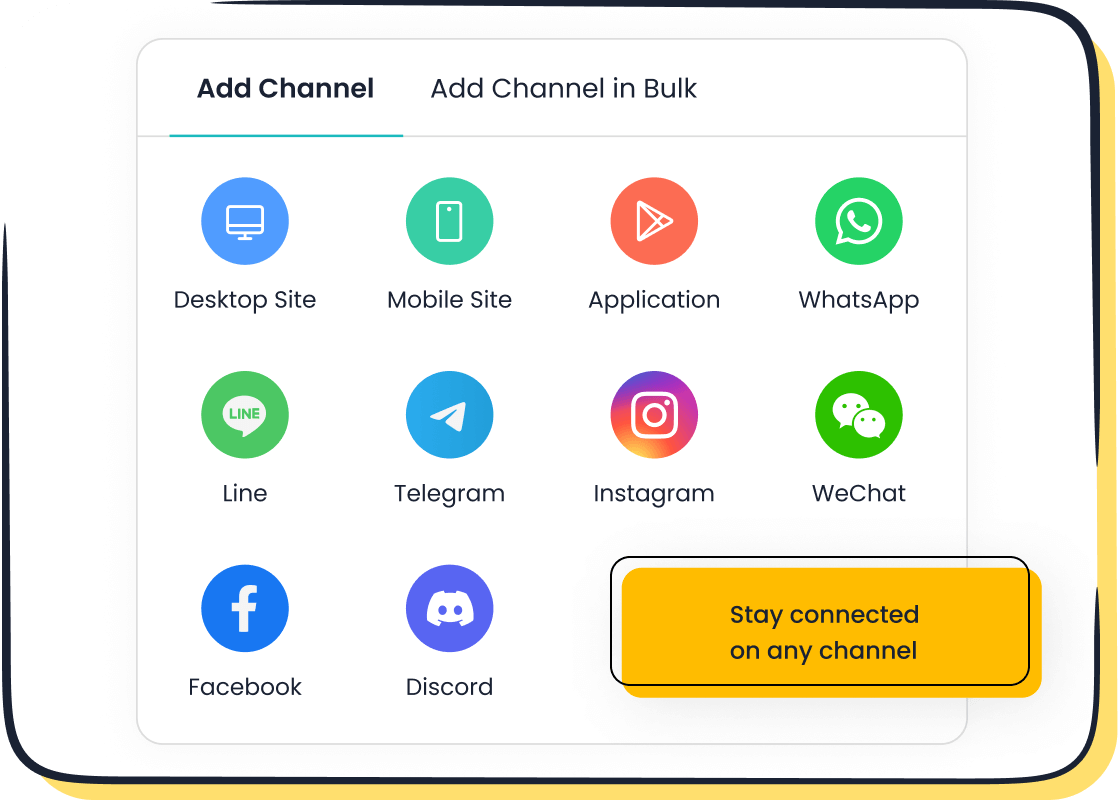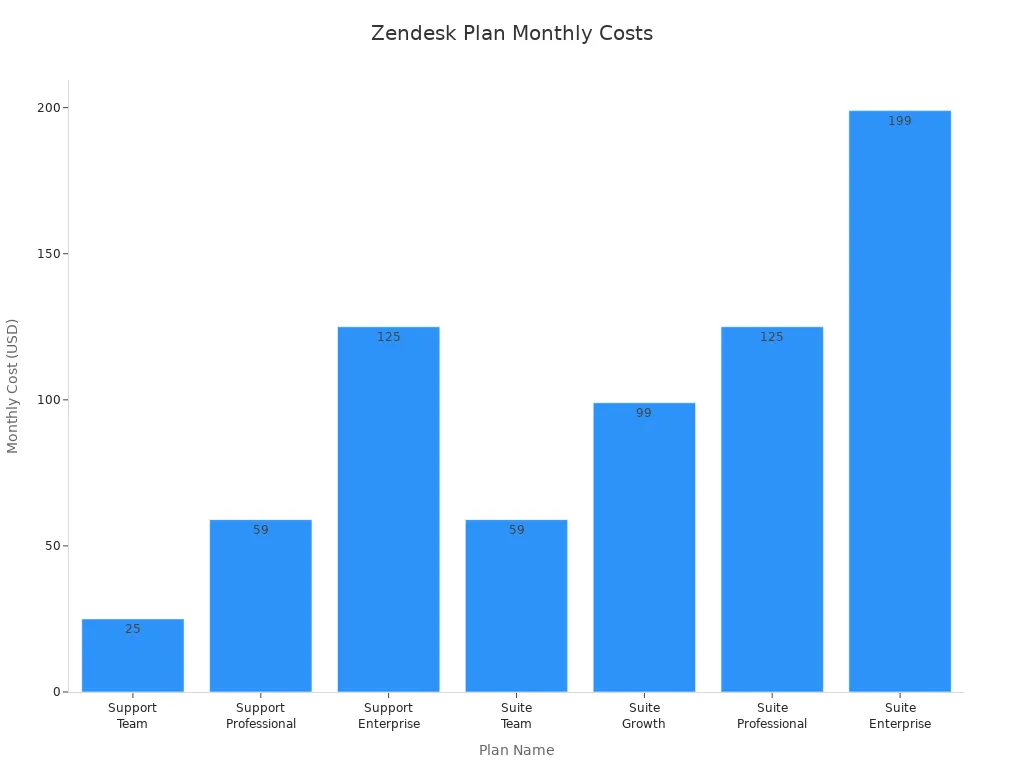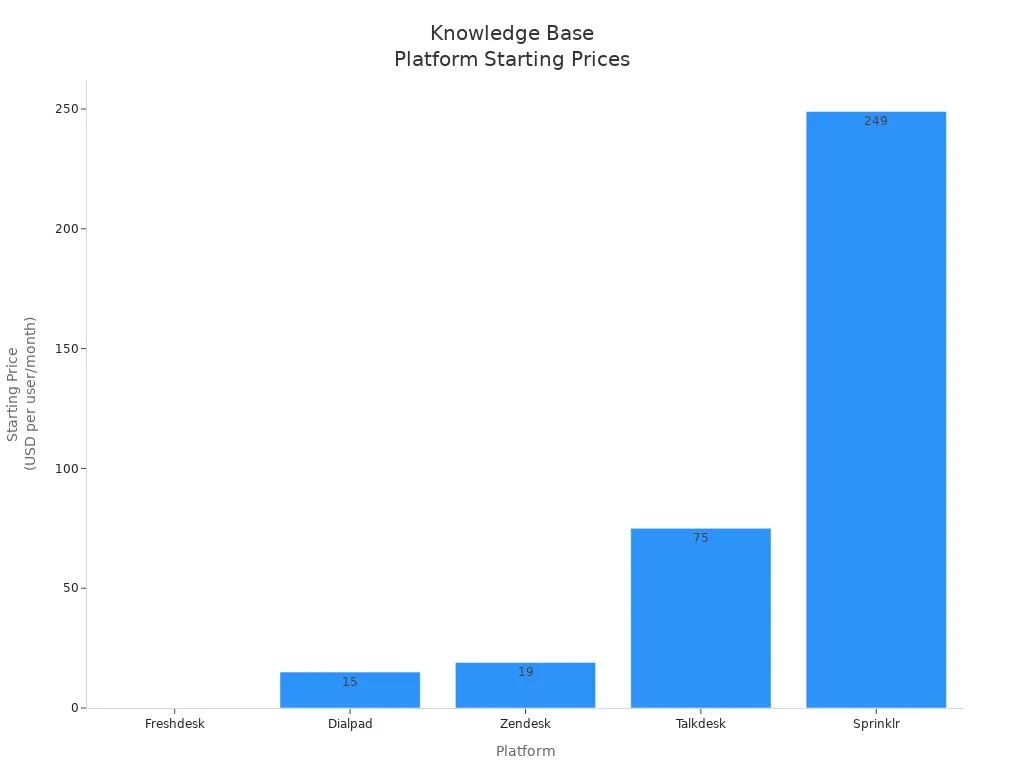10 Free and Budget-Friendly Contact Center Knowledge Base Apps

Looking for the best free knowledge base software for your contact center? You have plenty of great options, including Sobot Live Chat, Zendesk, Zoho Desk, Notion, and more. These tools help you deliver fast, accurate service and empower your team to solve problems on the first try. The contact center knowledge base market keeps growing fast as more companies see how it improves first contact resolution, lowers handling time, and makes self-service easier. With Sobot AI and the Sobot call center, you get reliable knowledge base software that helps your agents shine.
Contact Center Knowledge Base Overview
What Is a Contact Center Knowledge Base?
A contact center knowledge base is a digital library that stores all the important information your team needs to help customers. You can think of it as a smart toolbox filled with troubleshooting guides, FAQs, product details, and step-by-step instructions. With knowledge base software, you make sure your agents always have the answers right at their fingertips. This type of knowledge management software helps you organize everything in one place, so your team can find what they need fast. When you use a self-service knowledge base, your customers can also find answers on their own, which saves everyone time.
Why Contact Centers Need a Knowledge Base
You face a lot of questions every day. Without a contact center knowledge base, your agents spend too much time searching for answers or repeating the same information. Here’s what can happen if you don’t have the right knowledge management software:
- Agents get stuck with routine questions, which wastes time and raises costs.
- It’s hard to find accurate information quickly, so customers wait longer for help.
- Customers can’t use customer self-service, so they call or chat again for the same problem.
- You miss chances to spot common issues and update your troubleshooting guides.
- Your team can’t improve service because you don’t know what customers ask most.
Companies like Atlassian and Spotify show that a well-organized contact center knowledge base can boost efficiency and make customers happier. When your agents have quick access to knowledge management tools, they deliver better customer support and improve customer assistance.
Benefits for Customer Service Teams
When you use knowledge base software, you unlock many benefits for your team and your customers:
- Faster response times for every service request
- Lower costs because automation handles simple questions
- Happier agents who feel confident using knowledge management software
- Better customer support and higher satisfaction scores
- Customers and agents both get empowered with easy-to-use troubleshooting guides
You save time and money, set clear goals, and help your team shine. With the right contact center knowledge base, you make service smoother for everyone.
Top Free Knowledge Base Software

Choosing the right free knowledge base software can make your contact center run smoother and help your team solve problems faster. Here are the 10 best knowledge base software options that are either free or budget-friendly. Each one brings something unique to the table, so you can find the best fit for your needs.

Sobot Live Chat
Sobot Live Chat stands out as a powerful all-in-one solution for contact centers. You get a unified workspace that brings together live chat, ticketing, and a robust knowledge base. Sobot supports omnichannel communication, so your team can help customers on websites, apps, and social media. The platform uses AI to boost agent productivity and offers built-in analytics to help you make smart decisions.
Key Features:
- Omnichannel support (web, app, WhatsApp, Facebook, Instagram, Telegram, Discord)
- Unified workspace for all customer conversations
- AI-powered tools for faster responses
- Customizable widgets and auto-translation
- Built-in analytics and satisfaction surveys
- Seamless integration with other systems
Pros:
- No missed calls or chats—100% acceptance rate
- 38% gain in conversion with precise profiling
- Easy to use and quick to set up
- Free trial available
Cons:
- Some advanced features may require a paid plan
Pricing:
Sobot Live Chat offers a free trial. For detailed pricing, visit Sobot Live Chat.
Tip: Sobot Live Chat is ideal if you want a cloud-based, scalable platform that grows with your business.
Zendesk Support Suite
Zendesk Support Suite is one of the best knowledge base software options for contact centers that need strong integration and multi-channel support. You can manage tickets from email, chat, phone, and social media in one place. Zendesk’s knowledge base lets customers find answers 24/7, which reduces the load on your agents.
Key Features:
- Multi-channel ticketing system
- Self-service knowledge base and community forums
- AI-powered knowledge management
- Extensive integrations with e-commerce and business tools
- Robust analytics and reporting
Pros:
- Centralized ticket management
- Seamless support across channels
- Intuitive interface
- Powerful analytics
Cons:
- Can feel complex for small teams
- Ongoing maintenance needed for the knowledge base
- Advanced features cost extra
| Plan Name | Monthly Cost (per agent) | Key Features and Inclusions |
|---|---|---|
| Zendesk Support Team | $25 | Integrated ticketing, business roles, customer history |
| Zendesk Support Professional | $59 | Adds business hours, CSAT surveys, multilingual support, SLA management |
| Zendesk Support Enterprise | $125 | Conversation routing, custom roles, sandbox, third-party data storage |
| Zendesk Suite Team | $59 | Most Zendesk products included |
| Zendesk Suite Growth | $99 | Customized ticket layouts, AI knowledge management, self-service portal, SLA management |
| Zendesk Suite Professional | $125 | Community forums, more customization, extra storage |
| Zendesk Suite Enterprise | $199+ | All base products, HIPAA compliance, AWS events connector, advanced features |

Zoho Desk
Zoho Desk gives you a simple way to manage customer support with a free knowledge base software plan. The free plan supports up to three agents and covers basic help desk needs. You can upgrade for more features like automation, multi-channel support, and advanced reporting.
Key Features:
- Email ticketing and customer management
- Basic knowledge base for self-service
- Workflow automation (paid plans)
- Multi-channel support (paid plans)
- Customer satisfaction ratings (paid plans)
Pros:
- User-friendly interface
- Time-saving automation (on paid plans)
- Efficient issue tracking
Cons:
- Free plan is limited to three agents
- Lacks advanced features like AI and multi-channel support on the free plan
- Limited integrations on the free plan
Pricing Table:
| Plan Type | Free Plan Limitations and Features | Essential Contact Center Features Availability |
|---|---|---|
| Free Plan | Up to 3 agents, basic help desk, email ticketing, customer management | No multi-channel, limited automation, basic knowledge base |
| Standard Plan | $14/agent/month, adds multi-channel, SLAs, automation | SLA management, satisfaction ratings, reporting |
| Professional Plan | $23/agent/month, adds asset management, advanced automation, customer portal | Enhanced automation, customer portal |
| Enterprise Plan | $40/agent/month, AI chatbots, multi-brand, advanced customization | Full suite, AI, enhanced security |
Notion
Notion is a flexible workspace that works well as a free knowledge base software for small teams. You can create pages, link them, and organize everything with templates. Notion supports real-time collaboration and integrates with tools like Slack and Google Drive.
Key Features:
- Customizable pages and templates
- Powerful search and linking
- Real-time collaboration
- Integrations with Slack, Google Drive, Trello, and more
- Notion AI for content creation and organization
Pros:
- Highly customizable and flexible
- Great for document collaboration
- Extensive template library
Cons:
- Steep learning curve
- Not ready out-of-the-box; setup takes time
- Performance issues with large data sets
- Limited offline access
- Some features require paid plans
Confluence
Confluence by Atlassian is a popular choice for teams that want a collaborative knowledge management software. You can co-edit pages, comment, and share updates in real time. Confluence integrates with Jira, making it easy to connect support tickets and knowledge articles.
Key Features:
- Live collaboration and co-editing
- Centralized documentation
- Powerful search and permissions
- Integration with Jira Service Management
- Customizable with macros and apps
Pros:
- Improves first-contact resolution rates
- Reduces knowledge silos
- Easy to update and share information
- Supports continuous knowledge sharing
Cons:
- Can be overwhelming for new users
- Some advanced features require paid plans
BookStack
BookStack is a free, open-source knowledge base software that you can host yourself. It uses a simple structure of books, chapters, and pages, making it easy to organize information. The interface is clean and beginner-friendly.
Key Features:
- WYSIWYG and Markdown editing
- Logical content structure (books, chapters, pages)
- Full-text search
- Role-based permissions
- Multi-language support
- Integration with diagrams.net
Pros:
- Completely free and open source
- Simple and clean interface
- Easy to set up and use
- Good for teams wanting a Confluence-like experience without the cost
Cons:
- Limited customization options
- Lacks advanced collaboration features
| Feature Category | Details |
|---|---|
| Platform & Licensing | Open source, self-hosted, built with PHP (Laravel) and MySQL, MIT licensed, completely free. |
| Editing | Simple WYSIWYG editor with optional Markdown support. |
| Content Structure | Organized into Books, Chapters, and Pages with logical navigation and cross-linking. |
| Search | Robust full-text search across books or entire knowledge base. |
| Permissions & Roles | Role-based permission system controlling access at various levels (public/private/books). |
| Additional Features | Diagram embedding (via diagrams.net), multi-language UI, OAuth/LDAP integration, dark mode. |
| User Feedback | Praised as a straightforward, newbie-friendly alternative to complex wiki software. |
| Limitations | Limited customization and lacks advanced collaboration features. |
XWiki
XWiki is another open-source knowledge management software that offers deep customization and scalability. You can use scripting languages to automate workflows and create custom templates. XWiki supports granular permissions and integrates with enterprise systems.
Key Features:
- Custom templates and macros
- Scripting support (Velocity, Groovy, Python)
- Structured data and tables
- REST and Java API integrations
- Granular access control
- Collaborative editing and version control
Pros:
- Highly customizable and scalable
- Secure collaboration with fine-tuned permissions
- Supports large knowledge bases
Cons:
- Requires technical knowledge to set up and maintain
- Interface can feel complex for beginners
HelpSite
HelpSite is a simple, cloud-based knowledge base software that helps you create a self-service portal for your customers. You can set up a branded help center with FAQs and articles in minutes.
Key Features:
- Easy-to-use editor for articles and FAQs
- Customizable help center design
- Smart search for quick answers
- Contact form integration
- Supports custom domains
Pros:
- Quick setup and simple interface
- Good for small teams or startups
- Free plan available
Cons:
- Limited features on the free plan
- Not ideal for large or complex contact centers
LiveAgent
LiveAgent combines help desk, live chat, and knowledge base software in one platform. You can automate ticket distribution, set up IVR for calls, and integrate with many business tools. LiveAgent supports multiple knowledge bases and customer portals.
Key Features:
- Multi-channel support (email, chat, phone, social)
- Automated ticket distribution
- IVR and call routing
- Customizable knowledge bases and search widgets
- Customer forums and feedback tools
Pros:
- Wide range of integrations (CRM, VoIP, eCommerce, Slack, and more)
- Supports multiple knowledge bases
- Easy to customize and use
Cons:
- Some features require paid plans
- Interface can feel busy for new users
| Knowledge Base Features | Description |
|---|---|
| Customization | Tailor knowledge bases to specific needs without extensive training |
| Multi-knowledge bases | Support for multiple knowledge bases and customer portals |
| Search Widgets | Customizable search tools to enhance user experience |
| WYSIWYG Editor | User-friendly editor for creating and formatting articles |
| Customer Forums | Public or internal forums to foster community engagement |
| Feedback Mechanisms | Tools for gathering customer feedback and suggestions |
Guru
Guru uses AI to turn your team into knowledge management superstars. It unifies knowledge from different systems and uses intelligent decision trees to guide agents to the right answers. Guru’s real-time agent assist features help your team deliver accurate, fast support.
Key Features:
- AI-powered knowledge management
- Real-time agent assist and script suggestions
- Intelligent decision trees for guided answers
- Content audit and management tools
- Integrations with Slack, Chrome, and more
Pros:
- Empowers agents with instant, accurate information
- Reduces errors and improves efficiency
- Easy to integrate with existing tools
Cons:
- Some features require paid plans
- May need training for best results
Note: All these free knowledge base software options help you organize information, empower your agents, and improve customer satisfaction. Try a few to see which one fits your contact center best.
Self-Service Knowledge Base Solutions

Empowering Customers with Self-Service
You want your customers to find answers fast. A self-service knowledge base gives them the power to solve problems on their own. When you offer self-service options, people can look up FAQs, guides, or troubleshooting steps without waiting for an agent. This saves time for everyone and keeps your service running smoothly.
Did you know that 61% of customers prefer self-service options for simple issues? When you make it easy for people to help themselves, you see fewer support tickets and calls. In fact, a recent survey found that 65% of customer care leaders saw a drop in call volume after adding self-service support. Most customers start their journey with self-service support, and if they have a good experience, 74% will use it again.
Tip: The easier your self-service knowledge base is to use, the more your customers will love it!
Sobot Omnichannel Solution
Sobot’s omnichannel solution brings all your service channels together. You can create and manage support content in one place, then share it across web chat, mobile apps, social media, and more. Customers can switch between channels and still get the same great service. Sobot’s intelligent search helps users find answers quickly, no matter where they start.
Here’s what you get with Sobot’s knowledge base solutions:
- A unified dashboard for all customer support interactions
- Self-service options like FAQs and help centers
- Multi-language support for global service
- Seamless integration with your CRM and business tools
You can update your self-service support content anytime, so your information stays fresh and helpful.
Use Cases in Customer Service
You can use knowledge base solutions in many ways to boost your service. Here are some common use cases:
- Give customers quick answers with up-to-date guides and FAQs.
- Help agents find information fast, cutting down on search time.
- Improve service metrics by lowering average handling time and increasing first-call resolution.
- Make training easier for new agents with a single place for all service info.
- Keep your service consistent across every channel and touchpoint.
With self-service support, you help both your customers and your team work smarter. You save time, reduce costs, and deliver better service every day.
Build a Free Knowledge Base
Planning and Structure
If you want to build a free knowledge base that really works, start with a solid plan. First, look at your support tickets and talk to your team. Find out what questions come up the most. This helps you spot information gaps and decide what to include.
Next, gather all your guides, FAQs, and expert tips in one place. Pick a few team members who know your products well. Ask them to help write and review articles. Set up a simple style guide so everyone uses the same tone and format. Use short sentences, clear headings, and add pictures or videos when you can. Make sure your knowledge base platform lets you organize content into easy-to-find categories. Keep things simple so agents and customers can find answers fast.
Tip: Treat your knowledge base like a living document. Update it often and encourage your team to suggest changes.
Choosing the Right Platform
Picking the right knowledge base platform makes a big difference. Look for one with a strong search bar—think Google-style search. You want agents to find answers in seconds. Choose a platform that lets you edit content easily, supports categories and subcategories, and offers access control. Features like version history, multilingual support, and analytics help you keep everything up to date.
A good platform should also let you collect feedback from users. This way, you know which articles help and which need work. Sobot Live Chat, for example, gives you a unified workspace, smart search, and built-in analytics. These features help you manage and improve your knowledge base over time.
Integrating with Contact Center Tools
Integration is key if you want your knowledge base to boost agent productivity. Connect your knowledge base platform with your contact center tools, like Sobot Live Chat or your ticketing system. This lets agents pull up answers right inside their chat or call window. You save time and avoid switching between apps.
Many platforms support integrations with CRM, email, and messaging apps. With Sobot Live Chat, you can link your knowledge base so agents always have the latest info. This setup helps your team respond faster and keeps your service consistent.
Remember: The best way to build a free knowledge base is to keep it simple, keep it updated, and make sure it works with your other tools.
Comparison: Knowledge Base Software for Free
Feature Comparison Table
When you look for knowledge base software for free, you want to see how each tool stacks up. Here’s a quick table to help you compare some top options. You can spot the main features and see which one fits your contact center best.
| Software | Key Features & Differentiators | Target Use Case / Notes |
|---|---|---|
| Sobot Live Chat | Omnichannel support, AI tools, unified workspace, analytics, easy integration | Great for contact centers needing live chat and knowledge base |
| Zendesk | AI search, automation, analytics, multi-language, customizable help centers | Best for large teams and high-volume support |
| BookStack | Open source, simple structure, WYSIWYG editor, role permissions | Good for teams wanting free knowledge base software |
| HelpSite | Easy setup, smart search, branded help center, contact form integration | Perfect for small teams or startups |
| Guru | AI-powered knowledge management, real-time agent assist, decision trees | Empowers agents with instant answers |
| Confluence | Live collaboration, Jira integration, strong permissions, macros | Ideal for teams using Atlassian tools |
| Notion | Custom pages, real-time collaboration, templates, integrations | Flexible for small teams and internal docs |
Tip: Use this table to match your needs with the right knowledge base software for free.
Pricing Overview
You want to know how much these tools cost before you decide. Many offer a free plan, but some have paid upgrades for more features. Here’s a quick look:
- HelpSite gives you a forever free plan with basic features. Paid plans start at $15/month.
- BookStack is open source, so you pay nothing unless you want extra support.
- Sobot Live Chat offers a free trial, so you can test all features before you buy.
- Zendesk and Guru have free trials, but their advanced features come with higher monthly fees.
- Most free knowledge base software options use a subscription model. You pay monthly for more users or advanced tools.
| Pricing Model | Description | Upfront Costs | Recurring Costs | Hidden Costs |
|---|---|---|---|---|
| Subscription License | Pay monthly or yearly for users and features | Setup and customization | Monthly fees (start ~$16) | Extra for more users or branding |
| Free/Open Source | No license fee, but you may pay for setup or support | Installation/setup | None | Customization, training, premium support |
Best Use Cases
You want the right tool for your team’s needs. Here are some top picks for different scenarios:
| Software | Best For | Why It Works Well |
|---|---|---|
| Sobot Live Chat | Omnichannel support and agent efficiency | Combines live chat, knowledge base, and analytics |
| Zendesk Guide | High-volume, multilingual support | Handles lots of tickets and supports many languages |
| HelpSite | Small teams and startups | Simple, quick setup, and free plan |
| BookStack | Teams needing open source | Free, easy to use, and customizable |
| Guru | Fast agent answers | AI-powered knowledge management and real-time assist |
Note: If you have a global team or lots of support requests, Zendesk Guide and Sobot Live Chat stand out. For smaller teams, HelpSite and BookStack keep things simple and affordable.
How to Choose a Contact Center Knowledge Base
Assessing Your Needs
Before you pick a tool, you need to know what your team really needs. Start by looking at your daily challenges. Do your agents get too many questions? Do they struggle to find the right answers? Maybe you notice customers getting different information from different agents. These are signs you need a better system.
Think about what you want to store. You might need to keep call center policies, product details, or expert tips. Make sure you have a plan for keeping this information up to date. Choose a place that is easy for everyone to reach, like a cloud platform. Train your team so they know how to use the new system. Keep checking in to see what works and what needs to change.
Tip: Ask your team what slows them down. Their answers will help you figure out how to choose the right free knowledge base software.
Evaluating Features and Integrations
Not all knowledge base software is the same. Look for features that make your job easier. Here are some things to check:
- Smart search that finds answers fast, even with typos
- Easy ways to add and update articles
- Analytics to see what people search for and what’s missing
- Version control so you can track changes
- Feedback tools so agents can suggest updates
- A simple, friendly interface
You also want your knowledge base to work with your other tools. Make sure it connects with your CRM, ticketing system, or chatbot. This way, agents get the info they need without switching screens.
Scalability and Ease of Use
Your contact center might grow. You need a system that grows with you. The best platforms use cloud technology, so you can add more users anytime. Look for tools that let agents work from anywhere. AI features, like smart search and suggestions, help everyone find answers faster.
- Cloud-based systems scale up or down as needed
- Integrations with CRM and ticketing boost agent speed
- AI tools make searching simple
- Easy interfaces mean less training time
Budget Considerations
You want a solution that fits your budget. Many platforms offer free plans with basic features. Paid plans give you more options as your team grows. Here’s a quick look at some popular choices:
| Platform | Starting Price (per user/month) | Knowledge Base Availability | Notes on Free Plans and Features |
|---|---|---|---|
| Freshdesk | Free plan; paid from $15 | Yes | Free plan offers basics for small teams |
| Dialpad | From $15 | Yes | Paid plans add AI and self-service |
| Zendesk | From $19 | Yes | Paid plans unlock advanced features |
| Talkdesk | From $75 | Yes | Enterprise-level, advanced tools |
| Sprinklr | From $249 | Yes | Enterprise-grade, SEO, forums |

If you want to know how to choose the right free knowledge base software, start with a free plan. Upgrade only when you need more features.
Customer Success Story: OPPO and Sobot
Challenges and Solutions
Imagine you run a big company like OPPO. You get tons of questions from customers every day. Before OPPO started using Sobot, things got messy. Their customer support teams worked with different systems that did not talk to each other. This made it hard to give customers a smooth experience. Sometimes, customers got different answers from different agents. Data was scattered everywhere, so it was tough to keep information up to date.
OPPO wanted to fix these problems. They chose Sobot’s knowledge base and AI chatbot solution. With Sobot, OPPO brought all their customer data into one place. Now, agents and chatbots could see the same information. The AI chatbots handled simple questions right away, so customers got fast answers. Sobot also helped OPPO predict when customers might leave and reach out with special offers. This proactive approach led to a 25% drop in customer churn and a 30% boost in customer lifetime value. By using Sobot, OPPO created enhanced customer experiences and made their service more personal.
Results and Benefits
You can see the difference right away. OPPO’s chatbot now solves 83% of customer questions without needing a human agent. That means customers get help faster, and agents can focus on tougher problems. The new system also made it easier for OPPO to keep their knowledge base fresh and accurate. Customers started coming back more often, and OPPO saw a 57% increase in repurchase rate.
The benefits go beyond just numbers. OPPO’s team works better together because everyone uses the same tools. Customers feel more valued, which builds loyalty. With Sobot, OPPO improved customer retention and made their service stand out. If you want to deliver great customer support and see real results, a unified knowledge base like Sobot’s can help you get there.
You have many great options for building a strong knowledge base. Sobot Live Chat stands out if you want an all-in-one tool for customer support. Other apps like Zendesk, BookStack, and Guru also help your team work smarter. Try a few free trials to see what fits your needs. Ask your team for feedback. A good knowledge base makes customer support faster and keeps everyone happy.
Ready to get started? Sign up for a free trial and compare features with your team!
FAQ
What is a contact center knowledge base app?
A contact center knowledge base app helps you store and organize answers, guides, and tips. Your team can find information fast. Customers can also use it to solve problems on their own.
How do I choose the best free knowledge base software?
Start by listing your needs. Look for easy search, simple setup, and good support. Try free trials to see what works best for your team. Ask your agents for feedback.
Can I connect my knowledge base with live chat or ticketing tools?
Yes! Many apps let you link your knowledge base with live chat or ticketing. This way, your agents can pull up answers while chatting with customers. It saves time and keeps service smooth.
Why should I offer self-service options to customers?
Self-service lets your customers find answers anytime. They do not have to wait for an agent. This makes them happy and reduces your support workload.
Where can I find more frequently asked questions about knowledge base apps?
You can check the help center or support page of each app. Most companies post frequently asked questions to help you get started and solve common issues.
See Also
Best AI Solutions For Enterprise Contact Centers In 2024
Leading Call Center Analytics Platforms To Watch In 2024
Best No-Cost CRM Tools For Call Centers In 2024
